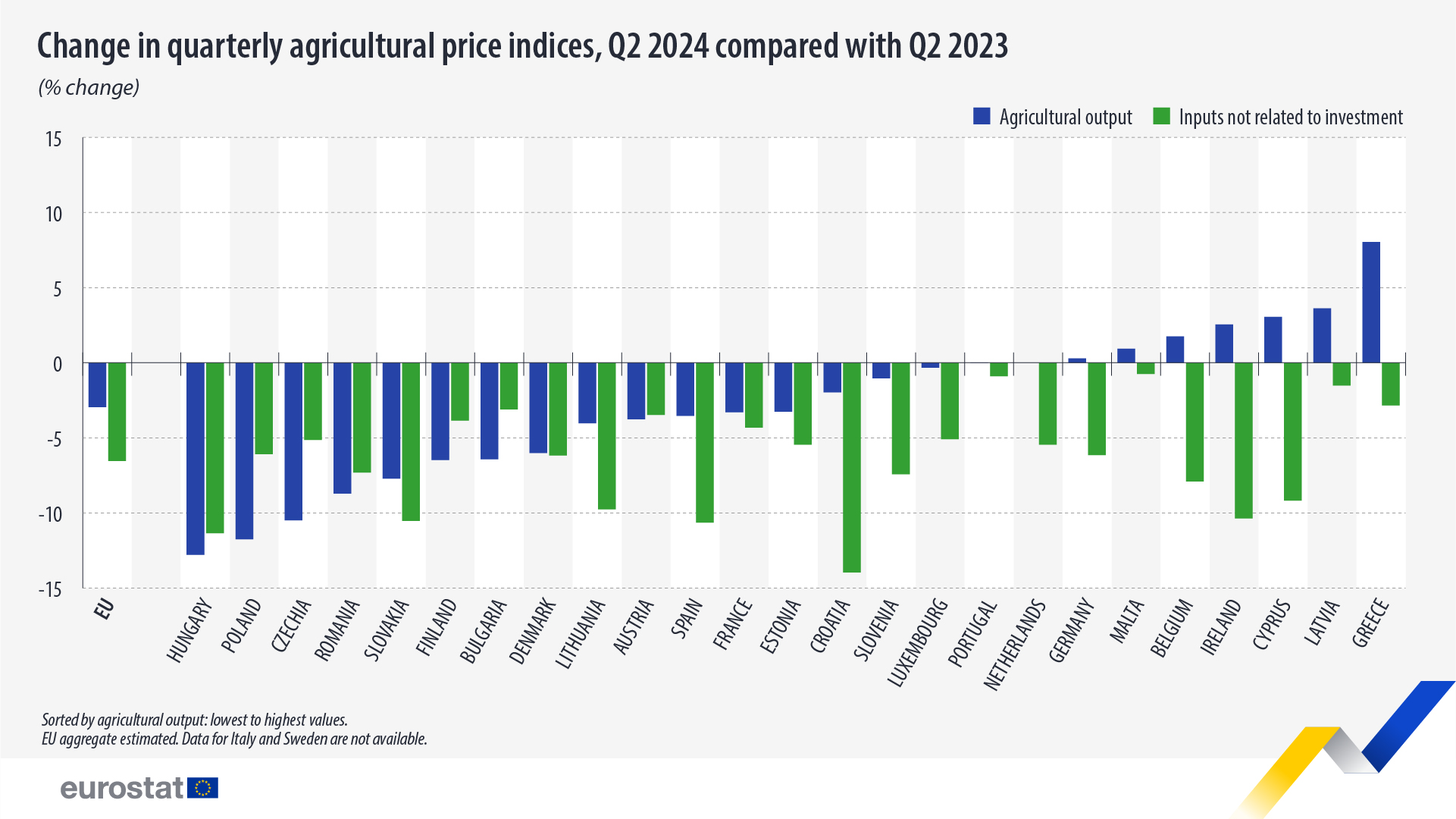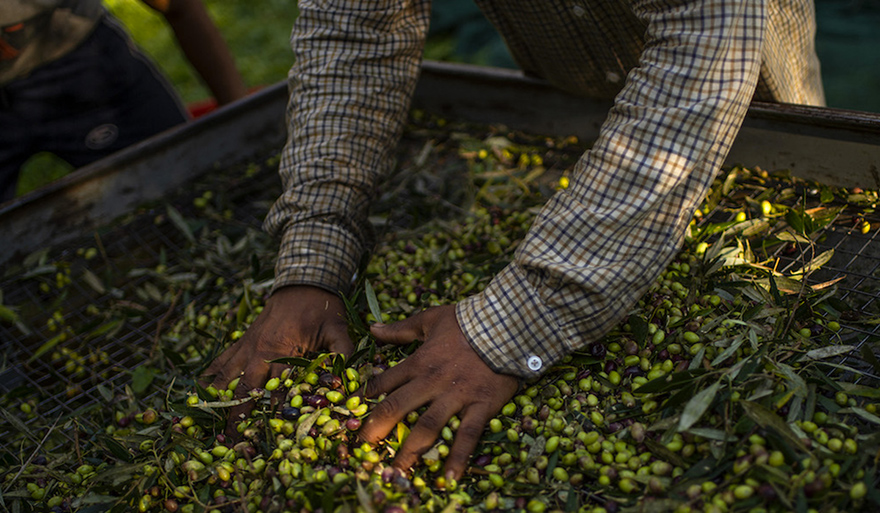While agricultural prices across most of the EU dropped in the second quarter of 2024, Greece saw an 8% increase, a concerning trend that contrasts sharply with the rest of Europe.
According to Eurostat, the average agricultural output price in the EU decreased by 3%, as countries like Hungary (-13%), Poland (-12%), and Czechia (-10%) experienced notable declines. Greece, however, recorded one of the highest price increases, alongside Latvia, Cyprus, and Ireland.

The rise in agricultural prices in Greece, particularly at a time when input costs—such as fertilisers and animal feed—are dropping, raises concerns for the country’s farmers and consumers. While the EU as a whole saw a 7% reduction in input prices, driven by steep declines in fertilisers (-19%) and animal feedingstuffs (-13%), the higher output costs in Greece suggest that farmers are not benefiting as much from these savings.

Moreover, the price surge in Greece is largely due to supply-side issues, notably in olive oil production, which saw a significant 41% price hike, exacerbating the situation for consumers. This increase reflects ongoing shortages rather than improved market conditions, making the price rise a negative outcome for both agricultural producers and consumers.
Read more: Eurostat Reports
(Source: Eurostat)

